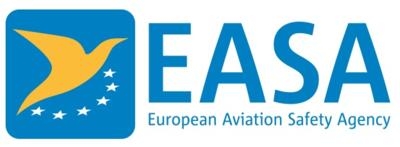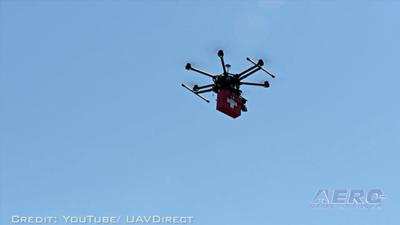Thu, Dec 24, 2015
Intended To Provide A 'Framework' For Ensuring Safety While Enabling The Industry To Grow
EASA has published a "Technical Opinion" on the safe use of drones in Europe’s civil airspace. The EASA Technical Opinion sets the direction to be followed for all future work to be done to ensure unmanned aircraft are operated safely and interact safely with other airspace users. The aim is to provide a framework that is proportionate to the activity, ensuring safety and at the same time enabling this innovative industry to continue to grow.

The opinion also serves as guidance for the European Union Member States that have no rules for small unmanned aircraft or plan to modify their existing ones, to ensure consistency as much as possible with the intent of the future EU rules. It also provides a roadmap presenting the steps to be taken in the future.
"Unmanned aircraft and the technological innovations they bring, are changing quickly the landscape for aviation. The Agency proposals ensure safety remains a priority while allowing proportionality and flexibility for new innovations," said Patrick Ky, EASA Executive Director.
The opinion includes 27 concrete proposals for a regulatory framework for operating all unmanned aircraft irrespective of their mass. The proposals focus more on how the drones will be used rather than their physical characteristics. The proposal establishes 3 categories of operation: ‘Open’, ‘Specific’ and ‘Certified’ with different safety requirements for each, proportionate to the risk. Most of the drone usage will belong to the ‘Open’ category which is foreseen for operations with limited safety risk, requiring a minimum amount of safety rules, overseen by law enforcement agencies. One of the key measures for this category will be limitation ‘Zones’, geographical areas in which use of drones will be limited or not allowed at all. To prevent unintended flight in restricted flight zones, a functionality automatically generating geographical limitations is also foreseen (i.e. geo-fencing). The more complex and risky the operation is, the more
stringent the requirements will be. For example the requirements for ‘Certified’ operations are similar to those for manned aviation.

The Technical Opinion follows the principles established by the European Commission in the Aviation Strategy published on 7 December 2015.
EASA will now work on the most appropriate set of tools - development of rules, guidance material or safety promotion – depending on what is more appropriate to each category in order to meet the overall objective to ensure safety while letting innovation develop.
(Image from file)
More News
Aviation Governance Secured...At Least For a While The National Business Aviation Association similarly applauded the passage of the FAA's recent reauthorization, contentedly recou>[...]
Emphasis On Growing The Future of Aviation Through Concentration on 'AFFORDABLE FLYERS' It's been a number of years since the Latest Edition of Jim Campbell's HUGE SportPlane Resou>[...]
Amazilia Aerospace GmbH, Develops Digital Flight Control, Flight Guidance And Vehicle Management Systems Textron eAviation has acquired substantially all the assets of Amazilia Aer>[...]
Honeywell's Primus Brings New Tools and Niceties for Hawker Operators Hawker 4000 business jet operators have a new installation on the table, now that the FAA has granted an STC f>[...]
Company Celebrates Niche-but-Important Advancement in Industry Standards Echodyne has announced full integration of its proprietary 'EchoFlight' radar into the e American Aerospace>[...]
 Bolen Gives Congress a Rare Thumbs-Up
Bolen Gives Congress a Rare Thumbs-Up The SportPlane Resource Guide RETURNS!!!!
The SportPlane Resource Guide RETURNS!!!! Buying Sprees Continue: Textron eAviation Takes On Amazilia Aerospace
Buying Sprees Continue: Textron eAviation Takes On Amazilia Aerospace Hawker 4000 Bizjets Gain Nav System, Data Link STC
Hawker 4000 Bizjets Gain Nav System, Data Link STC Echodyne Gets BVLOS Waiver for AiRanger Aircraft
Echodyne Gets BVLOS Waiver for AiRanger Aircraft




